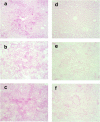Raman spectroscopy identifies radiation response in human non-small cell lung cancer xenografts
- PMID: 26883914
- PMCID: PMC4756358
- DOI: 10.1038/srep21006
Raman spectroscopy identifies radiation response in human non-small cell lung cancer xenografts
Abstract
External beam radiation therapy is a standard form of treatment for numerous cancers. Despite this, there are no approved methods to account for patient specific radiation sensitivity. In this report, Raman spectroscopy (RS) was used to identify radiation-induced biochemical changes in human non-small cell lung cancer xenografts. Chemometric analysis revealed unique radiation-related Raman signatures that were specific to nucleic acid, lipid, protein and carbohydrate spectral features. Among these changes was a dramatic shift in the accumulation of glycogen spectral bands for doses of 5 or 15 Gy when compared to unirradiated tumours. When spatial mapping was applied in this analysis there was considerable variability as we found substantial intra- and inter-tumour heterogeneity in the distribution of glycogen and other RS spectral features. Collectively, these data provide unique insight into the biochemical response of tumours, irradiated in vivo, and demonstrate the utility of RS for detecting distinct radiobiological responses in human tumour xenografts.
Figures




Similar articles
-
Raman spectroscopy detects metabolic signatures of radiation response and hypoxic fluctuations in non-small cell lung cancer.BMC Cancer. 2019 May 20;19(1):474. doi: 10.1186/s12885-019-5686-1. BMC Cancer. 2019. PMID: 31109312 Free PMC article.
-
Biochemical signatures of in vitro radiation response in human lung, breast and prostate tumour cells observed with Raman spectroscopy.Phys Med Biol. 2011 Nov 7;56(21):6839-55. doi: 10.1088/0031-9155/56/21/006. Epub 2011 Oct 5. Phys Med Biol. 2011. PMID: 21971286
-
A Raman spectroscopic study of cell response to clinical doses of ionizing radiation.Appl Spectrosc. 2015;69(2):193-204. doi: 10.1366/14-07561. Epub 2015 Jan 1. Appl Spectrosc. 2015. PMID: 25588147
-
Label-Free Raman Spectroscopy Reveals Signatures of Radiation Resistance in the Tumor Microenvironment.Cancer Res. 2019 Apr 15;79(8):2054-2064. doi: 10.1158/0008-5472.CAN-18-2732. Epub 2019 Feb 28. Cancer Res. 2019. PMID: 30819665 Free PMC article.
-
Combination of growth hormone receptor antagonist and radiation reduces tumour growth in a lung cancer xenograft model.J Mol Endocrinol. 2025 May 30;75(1):e250007. doi: 10.1530/JME-25-0007. Print 2025 Jul 1. J Mol Endocrinol. 2025. PMID: 40298337
Cited by
-
Raman spectroscopy reveals phenotype switches in breast cancer metastasis.Theranostics. 2022 Jul 11;12(12):5351-5363. doi: 10.7150/thno.74002. eCollection 2022. Theranostics. 2022. PMID: 35910801 Free PMC article.
-
Haralick texture feature analysis for quantifying radiation response heterogeneity in murine models observed using Raman spectroscopic mapping.PLoS One. 2019 Feb 15;14(2):e0212225. doi: 10.1371/journal.pone.0212225. eCollection 2019. PLoS One. 2019. PMID: 30768630 Free PMC article.
-
Investigating In Vivo Tumor Biomolecular Changes Following Radiation Therapy Using Raman Spectroscopy.ACS Omega. 2024 Oct 9;9(42):43025-43033. doi: 10.1021/acsomega.4c06096. eCollection 2024 Oct 22. ACS Omega. 2024. PMID: 39464461 Free PMC article.
-
Raman spectroscopy detects metabolic signatures of radiation response and hypoxic fluctuations in non-small cell lung cancer.BMC Cancer. 2019 May 20;19(1):474. doi: 10.1186/s12885-019-5686-1. BMC Cancer. 2019. PMID: 31109312 Free PMC article.
-
Raman Spectroscopic Stratification of Multiple Myeloma Patients Based on Exosome Profiling.ACS Omega. 2020 Nov 18;5(47):30436-30443. doi: 10.1021/acsomega.0c03813. eCollection 2020 Dec 1. ACS Omega. 2020. PMID: 33283091 Free PMC article.
References
-
- Canadian Cancer Society’s Advisory Committee on Cancer Statistics. Canadian Cancer Statistics 2015. Toronto, ON: Canadian Cancer Society (2015).
-
- Chang J. Y., Bradley J. D., Govindan R. & Komaki R. Principles and Practice of Radiation Oncology. (Lippincott Williams & Wilkins, 2008).
-
- Roswit B. et al.. The survival of patients with inoperable lung cancer: A large-scale randomized study of radiation therapy versus placebo. Radiology 90, (1968). - PubMed
-
- Rodrigues G. et al.. Definitive radiation therapy in locally advanced non-small cell lung cancer: Executive summary of an American Society for Radiation Oncology (ASTRO) evidence-based clinical practice guideline. Pract. Radiat. Oncol. 5, 141–148 (2015). - PubMed
Publication types
MeSH terms
Substances
Grants and funding
LinkOut - more resources
Full Text Sources
Other Literature Sources
Medical

